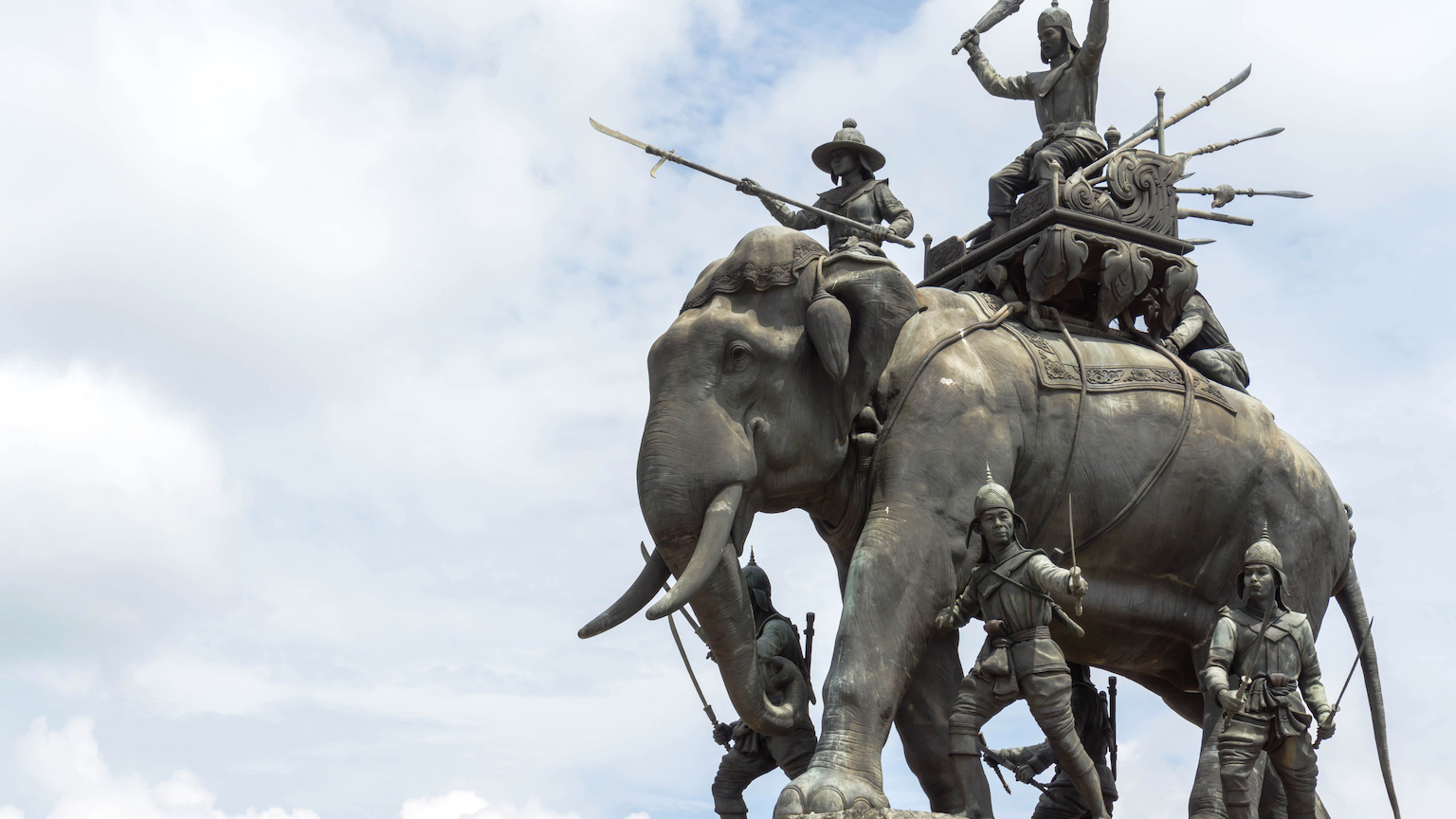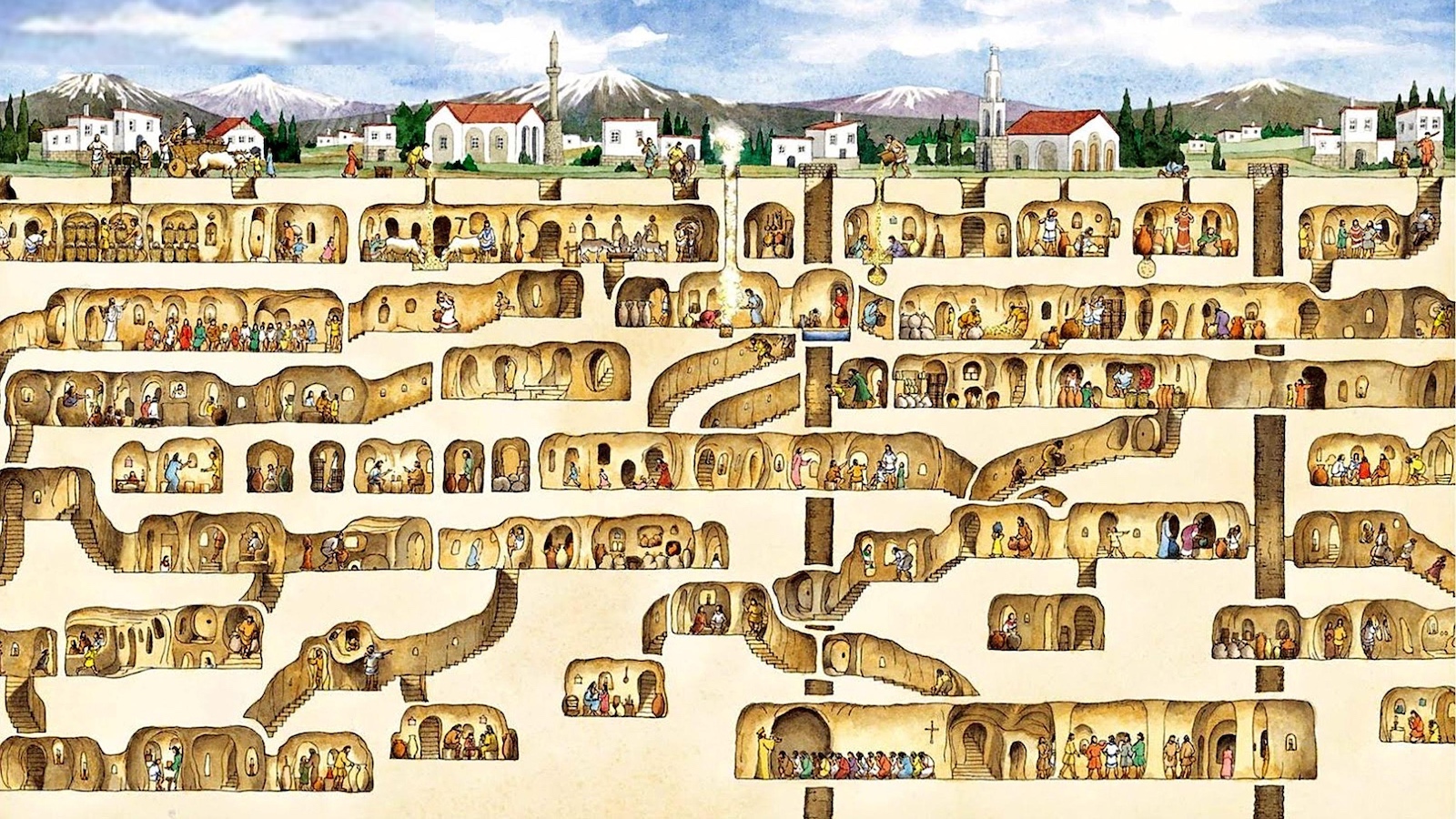Massive study of ancient DNA reveals hidden history of civilization and language

- The land mass running from the Balkans to the Middle East bridges Europe and West Asia. The region has dramatically influenced Eurasian history.
- Until now, researchers have been limited to archaeological findings in trying to reconstruct the region’s history and the evolution of its languages. New techniques allowed researchers to analyze ancient DNA for the first time.
- The data they unearthed helps describe the genomic history of the area and reveals population movements from as far back as 10,000 years ago. It contains some big surprises regarding theories for the origin of languages.
The regions that border the Black Sea have long drawn the attention of a range of researchers, from geneticists to linguists. The swath of land that includes the modern-day Balkans and travels east through Turkey and Armenia is a natural bridge to connect distinct cultures from Europe and Asia. Many peoples can trace their ancestry and language to the area, which has for millennia been a hotspot of human activity. It continues to be the subject of research by historians looking for common threads binding European and West Asian cultures.
Iosif Lazaridis is among the researchers interested in the area. Lazaridis works at Harvard University but grew up in Greece, a country famous for its role in shaping Eurasian history, culture, and language. Lazaridis long wondered about the ancestry and linguistic evolution of the earliest peoples to inhabit Greece and its surrounding areas. How, he wondered, did the ancient cultures of these regions meet and influence one another to form today’s modern culture and demographics?
Experts have relied on archaeological relics like pottery or writings to answer these questions. Though illuminating, this material can be imprecise and tough to interpret objectively.
Ancient DNA: A breakthrough in genetics
In some parts of the world, researchers have been able to rely on more than archaeology — they can extract ancient DNA from fossils. This allows them to study the genetic history of a place and understand how ancestry evolved. This has long been more difficult in areas prone to extreme heat, because DNA degrades very quickly in those conditions. A breakthrough came in 2015, though, when researchers discovered that DNA in the petrous bone of the inner ear could survive for millennia, even in warm climates.
In a groundbreaking study, Lazaridis took advantage of this technological breakthrough to conduct a massive genetic analysis of the ancient DNA of 777 individuals. The survey spanned a region researchers call the Southern Arc. From Croatia in the west, this region stretches to meet the Anatolian peninsula (modern-day Turkey), and extends into modern-day Iran. Lazaridis, a geneticist by training, collaborated with archaeologists, linguists, and local historians in an international effort involving 206 co-authors from 30 countries. Their work resulted in a trio of papers published in the journal Science. Their work is a significant contribution to our understanding of human history in this pivotal region.
The Yamnaya and the rise of Indo-European languages
In their first paper, the researchers traced genetic data to understand the linguistic evolution of the Indo-European language family. Mapping genetic migrations can help researchers identify opportunities for languages to meet and merge.
Today, almost half of the world’s population speaks an Indo-European language as a first language. The roots of the language are thought to have appeared in the Eurasian Steppe, the flat plains that link Europe and China, during the Bronze Age around 3,000 years ago. In this analysis, Lazaridis et al. leverage DNA from before and during the Bronze Age to visualize the cultural mixing that linguists hypothesize may have spread the Indo-European languages.
The researchers found that steppe pastoralists moved across the Eurasian Steppe between 5,000 and 3,000 years ago. This was a people known as the Yamnaya. Named for their distinctive burial pits — Yamnaya is Russian for “culture of pits” — the Yamnaya spoke a form of proto-Indo-European. (For more on the evidence, see The Horse, the Wheel and the Language by David W. Anthony.) When the Yamnaya moved southward, they influenced diverse cultures from which the Greek, Paleo-Balkan, and Albanian languages arose.
The Yamnaya also found their way east, moving across the Caucasus mountains and into Armenia, where the Armenian language was born. In fact, some men living in Armenia today are direct patrilineal descendants of the Yamnaya.
However, the DNA of Anatolian specimens shows almost no trace of Yamnaya origin. This surprised the authors because ancient Anatolian languages, like ancient Hittite, resemble Indo-European languages. This linguistic connection would suggest that the Anatolians interacted with the Yamnaya as the steppe pastoralists moved through the Southern Arc. But the genetic evidence powerfully refutes this theory.
A common linguistic root
Instead of showing movement of the Yamnaya to Anatolia, the newly available genetic data used by Lazaridis et al. reveals two separate migratory pulses into the region. First, the researchers describe how farmers from the Levant — an area in the modern Middle East that abuts the Eastern Mediterranean — populated the area 11,000 years ago. Then, 7,000 to 5,000 years ago, hunter-gatherers with ancestry from the Caucasus region moved to Anatolia. These people mixed with the original farmers from the Levant in a process that created what the scientists call an extraordinary homogeneity that seemed impermeable to outside influence.
If there is no steppe ancestry in Anatolia, then perhaps the Indo-European and Anatolian languages share an even more ancient ancestor. Delving deeper into the genetic signals of the area, the researchers found that the Yamnaya shared some ancestry from the South Caucasus, just like the Anatolians. This shared ancestry suggests that linguistic influence could have occurred early, in the highlands of West Asia, long before the Yamnaya moved into other areas of the Southern Arc.
This ancestral data also reveals that Anatolian languages likely experienced an early split from the Indo-European family and remained isolated, genetically and linguistically. The authors end this paper proposing that we need to discover this early population, which drove transformations of the Eurasian Steppe and Anatolia to link the regions linguistically. This “discovery of such a ‘missing link’ … would end the centuries-old quest for a common source binding through language and some ancestry many of the peoples of Asia and Europe,” they write.
The authors also include an important caveat: “The relevance of genetics to debates about language origins is more indirect because languages can be replaced with little or no genetic change, and populations can migrate with little or no linguistic change. But the detection of migration is important because it identifies a plausible vector [for linguistic influence].”
Along with remarkable insight into the movement of peoples through the Southern Arc during the Chalcolithic and Bronze Ages, the authors broadened the scope of their research to include an analysis of genetic activity related to the Mycenaean period in Greece, the Roman Empire, and the Medieval Era.
For example, the researchers analyzed new genetic data from the Mycenaean era of Greece, which was mythologized in Homer’s Odyssey. Researchers previously thought that the Yamnaya heavily influenced the Mycenaean age, because many Yamnaya were buried in elaborate tombs north of Greece. This seemed to suggest a link between steppe ancestry and social status. But the authors found no such correlation. In a similar analysis, the authors were surprised to discover that Anatolians contributed the majority of DNA to the peoples of the Roman Empire and the city of Rome.
Storytelling with DNA is not immune to bias
The bias of the observer will always burden history. In an article published co-currently in Science, Benjamin S. Arbuckle and Zoe Schwandt caution that “DNA sequences are often presented as revealing a ‘true’ history of humanity in contrast to historical and archaeological records that are prone to untruthfulness and imprecision. Although base pairs do not lie or exaggerate (though they do decay), neither do they tell stories, and storytelling used to interpret ancient genome analysis inevitably projects specific worldviews.”
The pair also write that the narrative framework of the paper amplifies a Eurocentric worldview, a bias that is impossible for any Western researcher to avoid. Finally, they point out that Lazaridis et al. only analyzed Y chromosome lineages. In other words, they only used DNA from males. This analytical technique is common because, unlike other genes, fathers pass on the Y chromosome to their sons virtually unchanged. Geneticists thus don’t have to deal with issues of recombination that can make precise reconstructions of lineages and descent more difficult. However, this analysis completely avoids people’s matrilineal ancestry, giving us only half of any individual’s family tree.
This emphasis on patrilineal heritage perpetuates gender stereotypes well into the past and “creates a strong sense that the events of history are carried forward by ‘great men,’” the authors write. Researchers would do well to explore maternal markers and investigate matrilineal interactions.
Lazaridis et al. recognize their lack of neutrality and caution readers against “conflating genetic and cultural similarity.” They also point out that the terminology common to the field may be misleading. For example, the authors investigate several “migrations” throughout the text. Still, they stress that when they “use the term ‘migration,’ we are not claiming that we have detected … a planned translocation of a large number of people over a long distance. Migration … may either be intentional or not; it may involve few or many individuals, and it may either be rapid or continue across many generations.”
Finally, though their sample size represents the largest ever studied in ancient genome analysis, 777 samples across 10,000 years leave many gaps.
Using DNA to reconstruct the past is fraught with challenges in interpretation and communication. Regardless, the study represents a massive breakthrough for ancient genome research and cements ancient DNA as a foundational, pioneering new technology that will significantly change our understanding of early human history.





